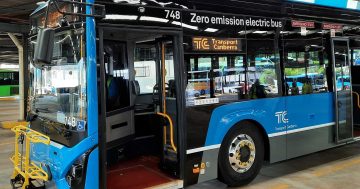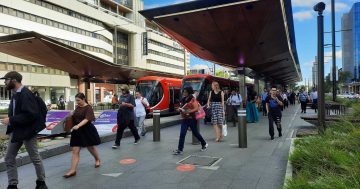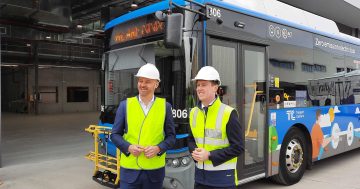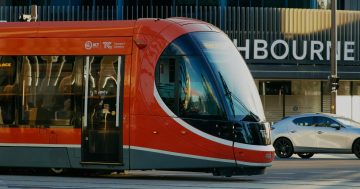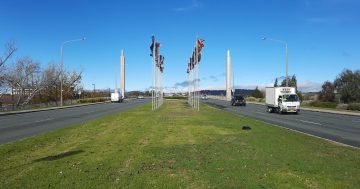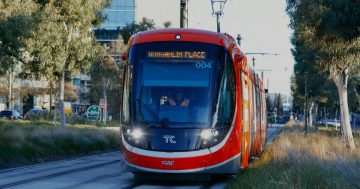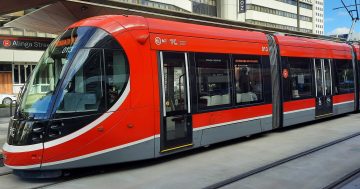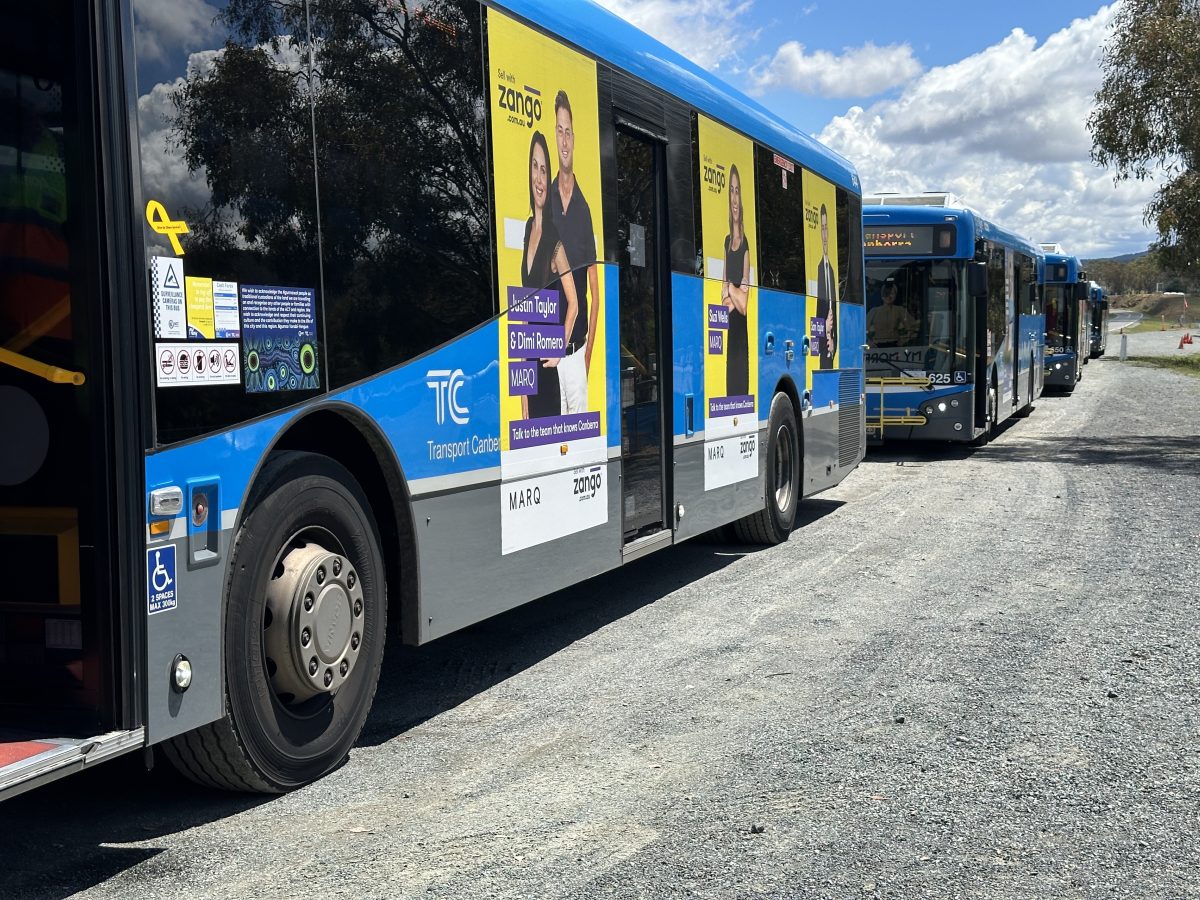
Is Canberra’s future on the buses? Voters have been given a real choice this election. Photo: James Coleman.
The ACT Government ignores the Canberra Liberals’ public transport policy at its peril. It could be a game-changer.
While light rail remains popular, the Liberals have tapped the growing anxiety about the lengthy timeframe for the Woden project and its cost, which they now say could be north of $4 billion.
No matter that their numbers may be fudged for full effect, what they are offering is a much-improved bus service with a couple of dedicated busways with priority features and a much lower price tag, although the overall package is yet to be fully costed.
The idea for an electric bus assembly operation in Canberra adds an extra strand to the policy. It will appeal to those who like the idea of diversifying the ACT economy with a manufacturing component.
The Liberals also say this will give the government more control over the procurement of the 500 electric buses needed for an expanded service.
Whether it is feasible or achievable is debatable, but it is an interesting idea.
The main game is whether voters will buy the proposition that a light rail network is just too expensive for a small city-state like Canberra and will take too long to roll out.
Why wait until 2033 for light rail 2B to Woden to be complete when the city can have a busway serviced more frequently with travel times of 15 minutes by 2027? It is unclear, though, how the Liberals will deal with the growing Barton cluster of public service departments and agencies.
The policy will tempt those overwhelmed when they see a ‘b’ after a number and weary of timelines heading into the next decade.
The Liberals say it’s time to work with what we have, including the existing light rail line from Gungahlin and the extension that will be built to Commonwealth Park, making it a better and more affordable service for which people will want to ditch their cars.
There is no escaping from the fact that people find the bus network hard to negotiate, without smooth connections and travel times that cannot compete with the car.
The Liberals’ proposals for tackling these basic problems with the network should be something any government should embrace, and the Public Transport Association is right to say Labor will need to offer more than just light rail and more of the same when it comes to buses.
The problem for the Liberals is that much of their policy relies on faith – that a Liberal Government will have the drive and commitment allegedly lacking in the current one when it comes to procurement, infrastructure and the recruitment of drivers.
A Liberal Government will face the same hurdles that the Barr Government has and is negotiating an uncertain environment of supply chain issues, construction cost blowouts and intense competition in the infrastructure sector.
Then there are the drivers for an expanded fleet and service, especially on weekends. Where will they come from?
Of course, the big picture question is: can buses do the job not just now but in the decades to come when Canberra’s population passes half a million and heads to 700,000?
Clearly, the government believes they won’t and that light rail, combined with buses and active travel, will.
It says that buses simply can’t deliver the mass transit system required to move lots of people efficiently in a city of that size and reduce the burden on our roads.
The government will also remind voters that the proposed Woden busway is merely an enhanced transit lane on the existing roadway.
Light rail will take time to build and cost more, but without it, the government will say, the ACT will be shortchanging future generations, committing them to clogged roads and a loss of its famed accessibility.
Public transport is not the only issue at stake in this election, but it is a big one, and it affects others, such as Territory finances and suburban development.
The Canberra Liberals have put a lot of time and effort into its policy, and the government and voters should pay it the respect it deserves.
The election could boil down to which vision voters find more attractive.












